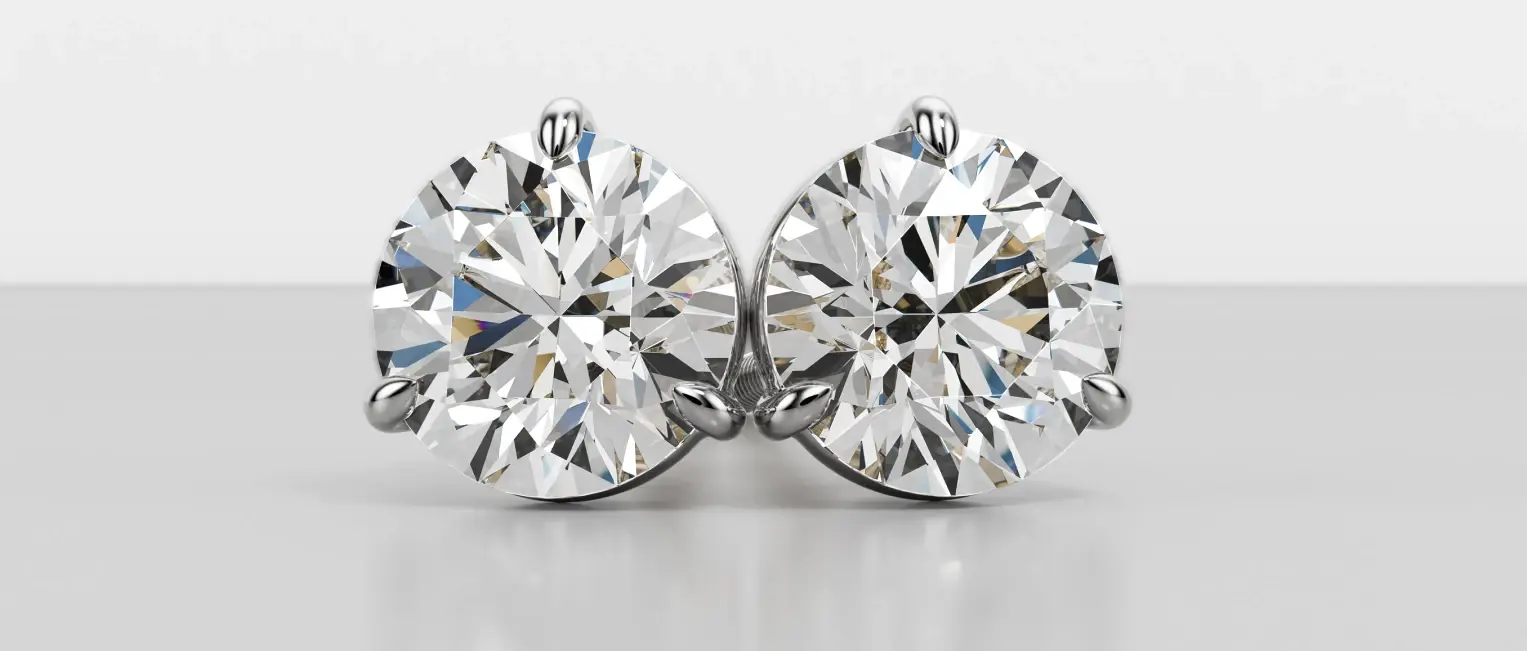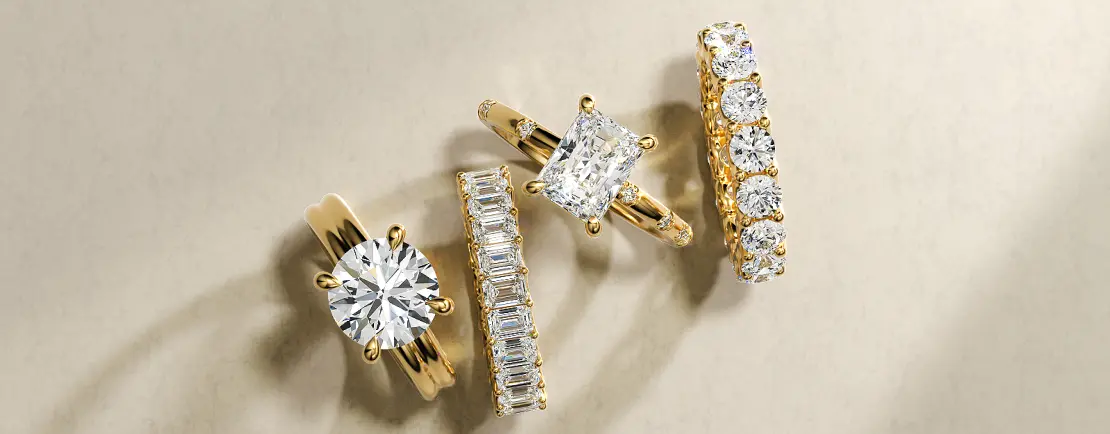Pavé Engagement Ring Guide
Sep 14, 2023

Choosing the right engagement ring is largely a personal matter. However, part of the decision also comes from educating yourself about all the options. Whether you’re looking for your own future engagement ring or shopping for the one that you love, this guide will tell you everything that you need to know about the pavé engagement ring.
A pavé setting is brilliant and delivers radiance like few other styles. There are different types of pavé settings, as well as other factors to consider in your purchase. Read on to learn what defines a pavé engagement ring and why it should be on your list of options.
What Is a Pavé Engagement Ring?
A pavé setting is characterized by small diamonds that line the shank of the center stone, creating the illusion of a continuous sparkle radiating out from the middle. The jeweler drills holes into the band and places the stones individually. They’re secured with mini-prongs or tiny beads, which creates a seamless sparkle.
The most common types of pavé settings are:
- Micro Pavé: A setting that uses over 100 extremely small diamonds that weigh less than 0.01 carat each.
- French Pavé: A setting where the diamonds are each set into a small V-shaped space that is cut into the band.
- Petite Pavé: This setting uses smaller prongs, allowing for the diamonds to be more visible than in a traditional setting.
The ring gets its name from the French word for “paved” since the bands of these rings appear to be “paved” with small diamonds that are not individual but make up a larger path. These rings may have one row of stones or multiple rows and come with several options for diamond cut and settings.
Why Choose the Pavé Engagement Ring?
For those who feel that more is more, the pavé engagement ring is the perfect choice. All those small diamonds will accent the larger center stone and offer so much more sparkle from every angle. It’s sure to get people’s attention and give you years of enjoyment with its stunning beauty.
Pavé settings offer timeless, elegant style with intricate detail that adds to the glamour and exquisiteness of the ring. It adds plenty of personality without detracting from your center stone. Plus, the pavé design also pairs exceptionally well with halo settings, three-stone rings, and even solitaire diamonds if you want something simpler.
If one diamond isn’t enough, the pavé engagement ring could be the perfect choice. Plus, with the variety of options for the accent stones and center setting, there is truly a unique option out there for just about everyone.
Pros and Cons of Pavé Engagement Rings
Several factors go into choosing the best engagement ring. The pros and cons below can help you make a final decision as to whether the pavé setting is the best option.
Pros:
- The pavé setting draws attention to the center diamond (or gemstone).
- The accent stones increase the brilliance and sparkle of the ring.
- You can enhance a smaller or less brilliant diamond at a lower cost.
- Designs range from vintage to classic to modern and everything in between.
- Pavé settings can be combined with other unique center stones.
- There are pavé engagement rings in every price range.
Cons:
- Sizing and resizing may be more difficult because of the added stones.
- There is a very minimal risk of side stone loss (if not well-made).
Keep these things in mind as you’re deciding on your engagement ring. Along with your personal preferences, it will ensure that you pick the perfect setting and design.
What Is the Best Diamond Shape for Pavé Engagement Rings?
The pavé setting itself usually utilizes round, brilliant-cut diamonds. Sometimes, oval diamonds are used. The curves allow room for the almost invisible prongs or beads that hold the stones in place.
Pavé accent stones are sometimes found in other cuts, but it is rare. The pavé setting can be paired with almost any center stone, including:
- Oval
- Round
- Princess-cut
- Emerald-cut
- Cushion-cut
In addition to picking the cut of your center diamond, you’ll also be able to choose whether you want a halo setting or a three-stone setting instead of a standard solitaire. The pavé design goes great with all of these, as mentioned above.
Essentially, you can pair your favorite center setting with a pavé band, creating a totally unique, extra-sparkly look that’s sure to turn heads. Even on a budget, you can feel like royalty with a brilliant pavé engagement ring!
Pavé vs. Channel-Set and Shared-Prong Settings
When you’re shopping, you may also notice some settings that are close to the pavé style, but not quite the same. Pay attention to the details below so that you get the perfect ring and don’t buy something that’s not what you wanted.
Pavé settings use prongs or microbeads and individual holes to secure each stone to the ring band. Almost all pavé settings include round or oval stones.
Channel settings, as the name suggests, involve carving a channel into the surface of the ring and then inserting stones. These also use round, princess cut, baguette cut, and other diamond cuts.
Shared-prong settings are going to look a lot like pavé settings, but they have shared prongs holding the diamonds instead of individual prongs for each stone.
Final Thoughts
With so much customization and versatility, it’s easy to see why adding a stunning pavé setting to your engagement ring can make it stand out. Make sure that you work with reputable jewelers to find the perfect pavé engagement ring, no matter what you have in mind.
From simple statement pieces to elegant rings that have more than 100 microscopic diamonds, pavé settings come with something for just about everyone. Whether you’re looking to get more sparkle for your spend or you just love the look of the pavé style, it’s remained a popular engagement ring option for several reasons. Find yours today!





















